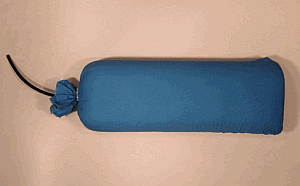Standard design underground reference electrodes, also known as bagged electrodes, are the original reference electrode design for permanent underground applications. They remain in widespread use today because they have proven long term durability. The reference electrode is contained in a cotton bag filled with bentonite-gypsum backfill. Since the entire surface of the bag is in contact with the surrounding soil, there is very low earth contact resistance. This is the primary reason that bagged electrodes are the preferred design for use in high resistance semi-dry soils or locations with seasonal dry periods.
Bagged electrodes are easily installed at new construction sites where there is an open excavation or at existing locations in a bore hole. After the electrode has been placed in the hole, it is covered with about 5 cm (2 inches) screened local backfill and then saturated with about 20 liters (5 gallons) potable water to activate it. The potential of the electrode should be checked against a portable electrode of known accuracy before the hole is backfilled.
Model UL: EDI’s LongLife Reference Electrode has a 30 year design life. It is considered to be the premium reference electrode for all underground applications including pipelines, underground tanks and other buried structures. Model UL Data Sheet
Model UL50: The Extended Life version has a 50 year design life for projects where a longer service life is required. Model UL50 Data Sheet
Model UX: EDI works with design and corrosion engineers to produce reference electrodes for those applications where standard models may require modification. Model UX Data Sheet

